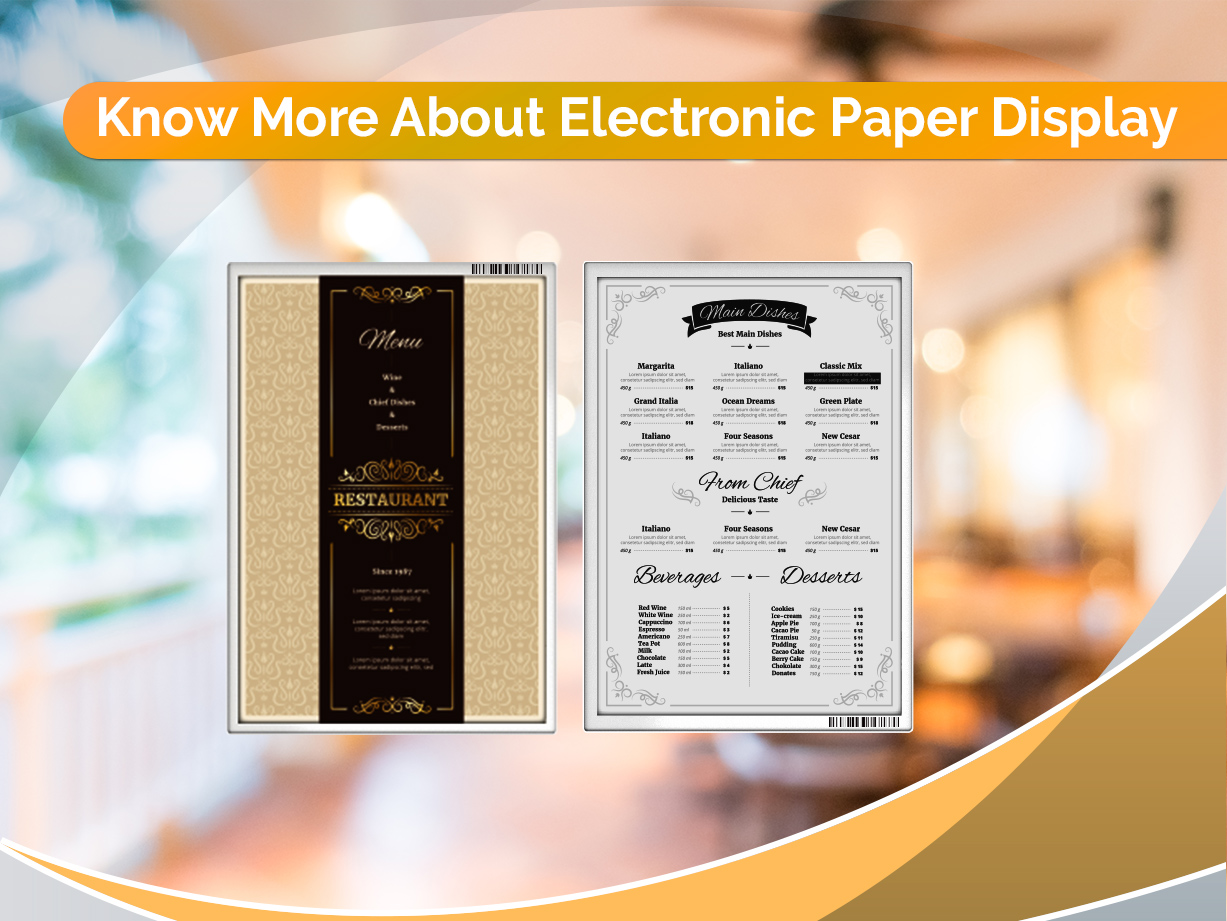Electronic paper, also known as e-paper, is a display technology that mimics the appearance of ordinary ink on paper. It typically consists of millions of tiny microcapsules, each containing charged white and black particles suspended in a clear fluid. These microcapsules are sandwiched between two thin layers of transparent material. When a voltage is applied, the white or black particles are attracted to the surface, creating a visible pattern. This is how electronic paper differs from regular paper.
An electronic paper display (EPD) is a type of display technology used in electronic devices. This aims to mimic the appearance of ink on paper. It is also commonly known as an e-paper or electronic ink display. The main advantage of an EPD over other types of displays, such as LCD or OLED, is that it does not emit light and only consumes power when the image changes. This makes the electronic paper display ideal for e-readers, digital signage, and other applications where the battery life is critical.
Electronic paper displays use microcapsule technology that contains charged black and white particles suspended in a clear fluid. These particles are moved to the surface of the display when an electric field is applied, creating the illusion of black and white ink on paper. EPDs can display static images for a long time without the need for a power source. They also offer excellent readability even in bright sunlight due to their reflective nature.
Electronic paper displays (EPDs) offer several benefits over other types of display technologies, including:
- Low power consumption: Electronic paper displays use very little power, especially when displaying static images. This makes them ideal for devices that need to operate for long periods on a single battery charge.
- Excellent readability: Electronic paper displays have a high contrast ratio and do not emit light. This makes them easy to read in all lighting conditions, including direct sunlight.
- Lightweight and durable: Electronic paper displays are thin, lightweight, and highly durable, making them ideal for use in portable devices.
- Wide viewing angles: EPDs have a wide viewing angle, which means that the image quality does not degrade when viewed from different angles.
- Environmentally friendly: Electronic paper displays do not contain any toxic substances, and they can be recycled at the end of their life.
- Versatility: Electronic paper displays can showcase both text and images, making them ideal for a wide range of applications. For eg- e-readers, digital signage, electronic shelf labels, and more.
EPDs offer a combination of low power consumption, excellent readability, and durability, making them an attractive option for different applications.
Why Choose an EPD over a Traditional Display?
One may prefer electronic paper displays over traditional displays for several reasons, depending on their specific needs and use case. Here are a few advantages that EPDs have over traditional displays:
- Eye strain: EPDs are designed to mimic the appearance of ink on paper, making them easier on the eyes than traditional displays. Especially for long reading sessions.
- Battery life: Electronic paper displays use little power, especially when displaying static images, resulting in longer battery life compared to traditional displays.
- Sunlight readability: Electronic paper displays are highly reflective and do not emit light, making them easy to read in bright sunlight. While with traditional displays, it may become difficult to read in direct sunlight.
- Durability: EPDs are highly durable and can withstand harsh environments, making them ideal for use in rugged devices.
- Environmental impact: EPDs are environmentally friendly, as they consume less power and can be recycled at the end of their life.
Overall, the choice between electronic paper displays and traditional displays depends on the specific needs of the user and the intended use case. For applications that require long battery life, readability in bright sunlight, and durability, EPDs may be a better choice. On the other hand, for applications that require fast refresh rates, and color, traditional displays may be a better choice.
Choosing between an electronic paper display and a traditional display is easy. Based on the above-mentioned factors, one can easily determine the same. Looking forward to the expert’s advice? You are just at the right place. Connect with us at Sparsa Digital today and get started with your luminous journey.

